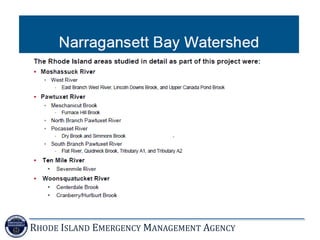
It was the first catastrophe bond to solely provide reinsurance coverage for flood risks. NFIP Catastrophe bonds: In August 2018, FEMA launched its first catastrophe bond to transfer risk from NFIP to the capital markets, as reported by Artemis.

In terms of total coverage and the structure of the coverage, FEMA would have slightly less reinsurance in 2021, according to Artemis. The cost of reinsurance coverage for 2021 was $195.8 million, compared with $205 million in 2020 for $1.33 billion of coverage. For 2021, NFIP arranged for $1.15 billion in coverage from 32 private reinsurers, up from 27 in 2020. Since 2016, it has been using reinsurance protection. NFIP Reinsurance: The NFIP has created public funding programs to narrow its deficit.In 2020, 58 private companies were writing flood insurance, compared with 41 in 2019, according to S&P Global Market Intelligence. Private carriers can also offer higher coverage than FEMA’s NFIP policies, currently capped at $250,000 for residential buildings and $500,000 for non-residential buildings. In recent years insurers have become increasingly comfortable with using sophisticated models to underwrite insurance risk, and modeling firms are getting better at predicting flood risk, resulting in more companies covering the risk. Private flood insurance: Flood insurance had long been considered an untouchable risk by private insurers because they did not have a reliable way of measuring flood risk.It caused $32 billion in insured losses in 2020 dollars, including payouts from FEMA’s National Flood Insurance Program (NFIP), according to Aon. Harvey made a second landfall in Louisiana on August 30th. Harvey’s floodwaters have caused multiple deaths and billions of dollars in property damage in Texas. Hurricane Harvey made landfall in Texas as a Category 4 storm on Augand then turned into the single biggest rain event in U.S.(See Private flood insurance below.) In June 2014 Florida enacted a law that encourages private companies to offer flood insurance. In 2019, federal regulators announced a rule requiring regulated lending institutions to accept private flood insurance policies comparable to the National Flood Insurance Program.A Triple-I Blog post explains how the new rating methodology will make the system fairer.

The new rates went into effect on Octofor new policies and will go into effect on all remaining policies renewing on or after April 1, 2022.According to FEMA more than 200,000 policies will have significant increases in premiums, while about 1.15 million will have decreases. On April 1, 2021, the Federal Emergency Management Agency ( FEMA) announced it will implement a new rating methodology designed to provide actuarially sound rates that are equitable and easy to understand.Coverage is available in a separate policy from the National Flood Insurance Program (NFIP) and from many private insurers. There is no coverage for flooding in standard homeowners or renters policies or in most commercial property insurance policies. According to the National Flood Insurance Program (NFIP), 90 percent of all natural disasters in the United States involve flooding.

Flooding is the most common and costly natural disaster in the United States, causing billions in economic losses each year.


 0 kommentar(er)
0 kommentar(er)
